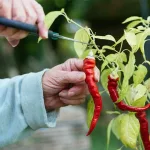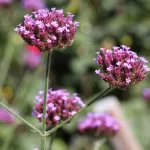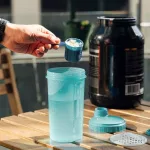The time it takes for an edible to take effect varies with its formulation and amount. Products that are swallowed usually require more time to act than those absorbed in the mouth, such as lozenges.
Edibles are food items infused with cannabis. They appear in many varieties, from gummies to brownies, and can include one or both of cannabis’s primary compounds: THC (delta-9-tetrahydrocannabinol) and CBD (cannabidiol).
As cannabis laws change, edibles have grown more popular. CBD-only edibles have been used to manage conditions like anxiety and chronic pain. Another advantage is that edibles avoid the respiratory harms linked to smoking cannabis.
The effects produced by edibles often differ from those of other cannabis formats. The psychoactive experience from edibles may feel stronger and can last longer than the high produced by smoking.
Edibles also need more time to begin working compared with smoking or vaping, though many elements influence the timing.
Read on to find out more about edibles, including when you might begin to feel their effects, how long those effects can last, recommended dosing, possible side effects, and safety considerations.

When will you start feeling an edible?
Edibles commonly take several hours to begin working. That said, onset varies based on a number of factors.
One major factor is the active ingredient profile. Products with a higher concentration or larger dose of THC may produce effects more quickly.
Note that CBD-only edibles are not intoxicating. They won’t produce the characteristic “high” of THC-containing products, so it can be harder to notice when CBD takes effect.
For both THC and CBD products, onset also depends on where in the body the edible is broken down and absorbed into circulation.
Lozenges, gum, and lollipops act faster because they’re absorbed under the tongue
Certain edible forms, like lozenges, chewing gum, and lollipops, are used without being swallowed immediately. In those situations, absorption happens across the mouth’s mucous membranes, known as sublingual absorption, which tends to produce faster effects.
Chewable edibles take longer since they’re processed through the digestive tract
Chewable items such as gummies, cookies, and brownies generally have a slower onset. That’s because the active compounds are first processed by the digestive system. From there, they enter the bloodstream and move to the liver.
In the liver, active compounds are metabolized before being released back into circulation and reaching the brain, where the subjective effects emerge.
Other influences on onset time
Additional variables related to your habits and physiology can affect how fast ingested edibles begin to work. These include:
- what you’ve eaten recently
- your metabolic rate
- biological sex
- body weight
- your tolerance to cannabis
Because edibles do not act immediately, some people are tempted to take another dose shortly after the first. This can result in consuming too much.
It’s wise to wait at least 24 hours before taking an additional dose.
How long do effects from edibles typically last?
An edible-induced high commonly endures significantly longer than smoking or vaping — often six to eight hours.
For THC-containing edibles, peak blood concentrations usually appear around a few hours after consumption, which is when effects are likely to be most pronounced.
As with onset, how long an edible’s effects persist depends on many factors, including the potency and dose. Chewed-and-swallowed products often produce a longer-lasting high than products absorbed in the mouth.
Individual characteristics like metabolism, weight, and previous cannabis use also influence duration.
Still, predicting the exact duration can be difficult. In one study that analyzed over 100,000 tweets about edibles, an “unpredictable” length of high was frequently reported as an adverse effect.

Common edible varieties
Edibles are available in many formats, and new items appear regularly. Common categories include:
- Baked goods: brownies, cookies, biscuits, waffles.
- Candies and sweets: gummies, chewing gum, lozenges, lollipops, hard candy, chocolate, truffles, fruit bars, marshmallows.
- Beverages: coffee, tea, iced tea, soda, energy drinks and shots, beer, wine, and other alcoholic beverages.
- Other items: jerky, infused butter, sugar, and syrups.
How much should you consume?
Most edible products list how much THC or CBD is present per serving. For example, a single gummy often contains 10 milligrams (mg) of THC.
However, some manufacturers label the total cannabinoid content for the entire package or the whole food item. Using the gummy example, a package might contain 100 mg of THC; if there are 10 gummies, that is 10 mg per piece.
This labeling can be confusing for whole food items like brownies or cookies. In those cases, a single serving might be only a portion of the item.
Read labels carefully
Always check the label before consuming. Identify the THC or CBD amount per serving and confirm whether the serving size corresponds to the whole product or only part of it.
Even with accurate labeling, edible dosing can be unpredictable due to many variables.
Start with a low dose and gradually increase until you reach the effect you want. Below are general dosing guidelines for THC and CBD edibles.
THC dosing
Tolerance to THC differs between smoking and edibles. Edible THC often leads to stronger effects.
A 2015 report commissioned by the Colorado Department of Revenue found that the behavioral effects of ingesting 1 mg of THC are similar to those of smoking about 5.71 mg of THC.
Even if you regularly smoke cannabis, begin with a low edible dose. Slowly raise the amount over time until you achieve the desired result.
Doses above 20 to 30 mg per day are linked to a higher risk of adverse effects, including dependency.
Effect Limited to no THC tolerance Lsome THC tolerance (smoking) LTHC tolerance (smoking) LTHC tolerance (edibles)
mild > 2.5 mg 2.5–5 mg 5–10 mg 10–15 mg
moderate 2.5–5 mg 5–10 mg 10–15 mg 15–30 mg
strong 5–10 mg 10–20 mg 15–30 mg > 30 mg
CBD dosing
Because CBD is non-intoxicating, the risk of severe acute effects from too much is lower. Still, very high doses can cause unwanted symptoms like drowsiness.
As with THC, begin with a small CBD dose — for many people, 2.5 to 10 mg is a reasonable starting point — and increase gradually to achieve the desired effect.
Because CBD can promote sleepiness, consider taking it in the early evening until you learn how it affects you.
Benefits of edibles
Edibles offer several advantages compared with smoking. These include:
- No respiratory harm: Cannabis smoke contains carcinogens, and habitual smoking is linked with respiratory problems such as lung inflammation and bronchitis. Edibles avoid combustion and inhalation, reducing those risks.
- Longer-lasting relief: Edibles typically last longer than smoking or vaping, which can be useful for medical users needing sustained symptom control.
- Convenience: Consuming edibles does not require going outside, and people unable to smoke often find them easier to use.
- Discreet: Like other medications, edibles can be used without drawing attention. Unlike smoking, they don’t produce lingering odors, which helps those who need to medicate discreetly at work or elsewhere.
Possible side effects
Side effects from edibles vary depending on the active compound.
THC edibles
Large doses of THC edibles can cause unpleasant reactions that last for several hours or even days. This is sometimes called “greening out” or an overdose of cannabis.
Symptoms that can accompany an edible cannabis overdose include:
- impaired thinking
- motor coordination problems
- severe drowsiness
- anxiety and agitation
- increased cardiac strain
- nausea and vomiting
- hallucinations
- delusional thinking
- psychotic episodes
CBD edibles
Known side effects of CBD include:
- fatigue
- diarrhea
- appetite changes
- weight changes
Further research is needed to better understand CBD’s short- and long-term effects.
Other considerations
When buying edibles, evaluate the producer carefully.
Reputable manufacturers are open about product contents and recommended dosing. A trustworthy company should answer questions without pressuring you to buy.
That said, it’s not always possible to know exactly what an edible contains. One analysis of 75 products examined dose and label accuracy.
After testing for THC content, researchers found only 17% of products were labeled accurately. Among the inaccurately labeled items, 23% had more THC than stated and 60% had less than claimed.
Edibles can interact with medications and supplements. If you’re considering using them, consult a physician. In regions where edibles are legal, a doctor may suggest an appropriate dose or brand.
Bottom line
Edibles may take several hours to take effect. If you’ve already consumed a dose, wait at least 24 hours before taking more, since an additional dose could cause unpleasant reactions.
For first-time edible users, begin with a small dose and gradually increase until you reach a dose that delivers the intended effect.


















Leave a Reply
You must be logged in to post a comment.